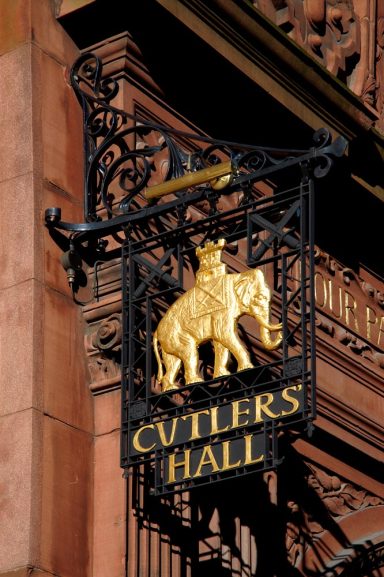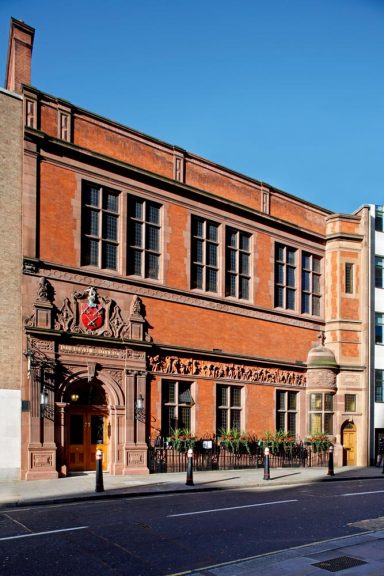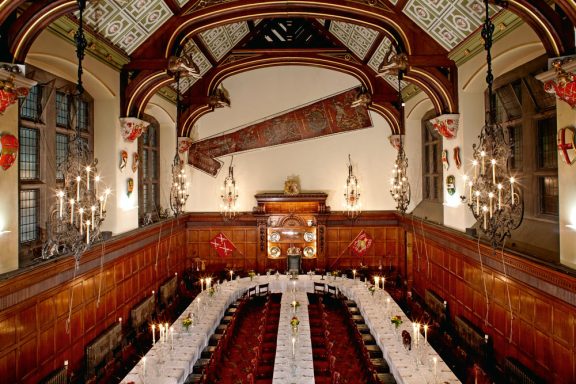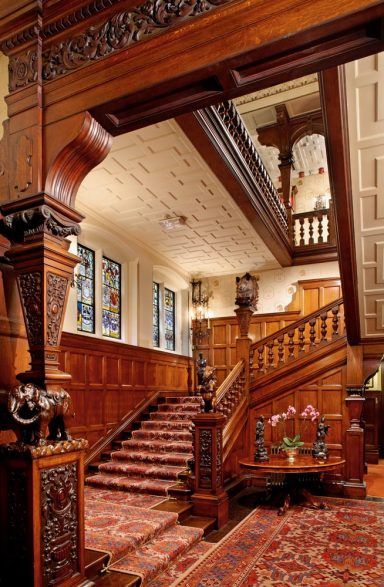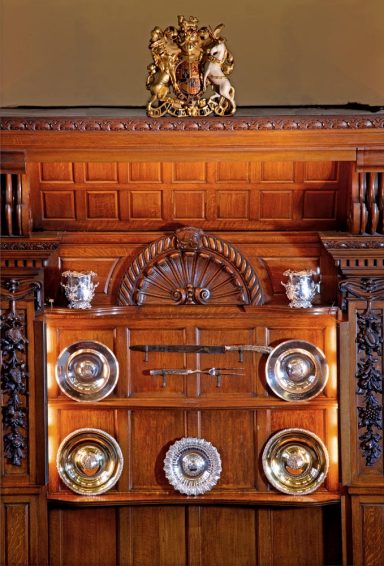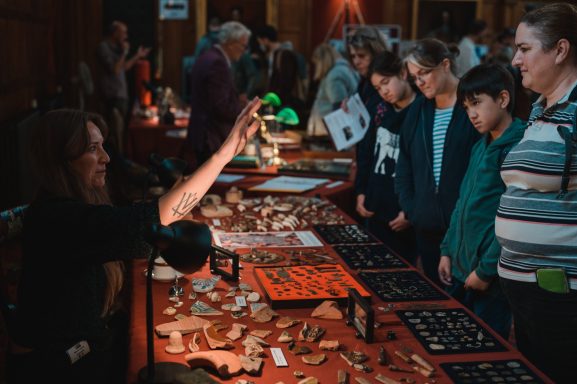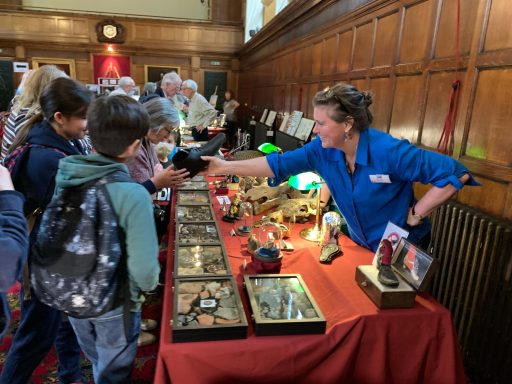Mudlarking for RNLI with Steve Brooker
The man, the myth, the legend (leg-end?) is BACK ONCE AGAIN. You heard right, it's Mud God time. Putting the jokes aside, now's your chance to mudlark with Steve 'Mud God' Brooker, a mudlark of over forty years standing, he of History Channel's hit series 'Mud Men', to raise over one thousand pounds for RNLI in the year of their 200th birthday!
Ably abetted by his apparently 'glamorous assistant'* Old Father Thames, Mud God will lead a four-hour mudlarking session on the River Thames foreshore, teaching you all need to know for mudlarking both productively - and, here's the clincher - efficiently.
This exclusive adventure is geared for mudlarks of all experience levels. Steve will teach you the tips of the trade and explain how to read a tide just by looking at the settlement lines in order to find historic artefacts. Steve compares the River Thames to a dusty old Victorian rug covering the floorboards of its foreshore; learn exactly which corner to lift to discover those coins, buttons and an accumulation of fantastic objects swept under its moth ridden top. On our travels across the river you will also be privy to funny, quirky stories, and gain an in-depth knowledge about London’s history.
Our previous Mudlarking Masterclass with Steve raised over £900 for the construction of the new RNLI life boat station at Waterloo Bridge. Let's beat our old total this time round! All proceeds of this affordable foreshore expedition will go to the RNLI - we take absolutely no fees for ourselves whatsoever. Let's get that dosh raised, folks...please read on for RNLI stats and info!
About the RNLI
Entirely funded by public donations, last year a total of 355 lives were saved by the Royal National Lifeboat Institution (RNLI), data shows, with more callouts along the Thames than anywhere else.
Since the RNLI search and rescue service started on the Thames in 2002, the lifeboats have attended over 3,500 incidents and rescued over 1,750 people, and dozens of dogs**. London’s Waterloo Bridge was the busiest lifeboat station in 2023, followed by Chiswick, also in the capital. London RNLI lifeboat stations are the second busiest in the UK and Ireland.
Peter Emmett, head of engagement at the RNLI, said:
“This year, the RNLI has been saving lives at sea for 200 years. We’re now coming up to our busiest time of year, so we’re putting out our call for help to raise the funds which will help keep our life-saving service going today and into the future.
“Our incredible lifeboat crews across the UK and Ireland launched over 9,000 times last year to help those in need, and our lifeguards kept people safe across hundreds of beaches. As a charity, we rely on the generous support of members of the public to continue this life-saving work.
“It’s clear from these new figures that demand for our services remains high, with our life-savers dropping everything to run to the lifeboat station when the call comes in. Every Mayday Mile completed will raise funds to go towards ensuring we are ready whenever the call for help comes in. It’s so easy to get involved, and to have fun whilst helping the RNLI save lives.”
TO BOOK YOUR TICKET NOW head over to Totally Thames 2024, by following this link.
*Steve told me to write that.
** 2019 stats




Mudlarking at Henfield Hall
Saturday 11th May, 11am - 4:30pm
For one day only London's top mudlarks display their collections of amazing treasures reflecting the history of the River Thames.
Meet the mudlarks and view their incredible river-found artefacts that tell the story of London.





Mudlarking at Emery Walker House - EXTENDED RUN - Until May 30th.
Mudlarking: Unearthing London's Past.
Our new two-month long exhibition started Saturday, 2nd March and runs until 30th May. Because it’s an old Georgian house filled with its original Victorian contents (including many William Morris tapestries and wallpapers), you have to pre-book a ticket which includes a guided tour of the house. Book your ticket quickly because the first two weekends are already sold out!
In addition to the mudlarking exhibition, we have organised a series of talks, walks, guided foreshore tours and a mudlarking scavenger hunt through the house. Candlelit tours of the house are also available.
For more information, please visit the Emery Walker House website: www.emerywalker.org.uk/exhibition
New for 2024
We are excited to announce a series of mudlarking exhibitions in various locations around London throughout 2024.
The first exhibition will take place at Watermen’s Hall, the historic home of the Thames Watermen & Lightermen on Saturday and Sunday, 24th - 25th February from 10am - 4pm. You will find the Hall at 16-18 St Mary at Hill, a stone’s throw from the Tower of London. See thousands of mudlarking artefacts in this beautiful building in Central London. Each day 15 different mudlarks will be displaying their personal collections. It’s a rare opportunity to see their finds and hear firsthand the backstories from the mudlarks who found them.
On Sunday 25th February at 4pm, Nathalie Cohen from the National Trust will be presenting her lecture “The Fishful Thames”: Fish and Fishing on the River’. Decades of investigation along the banks of the Thames have revealed evidence of various forms of fishing over hundreds of years. Nathalie’s talk will focus on the archaeological evidence of this activity through time and examine the iconography and presentation of fish and fishing, especially during the medieval period.
Entry to the exhibition is free, so we hope you can come!

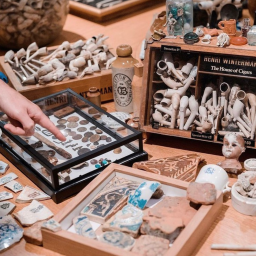



2023 Dates Announced
All Hands on History events for Totally Thames 2023 have now been announced. You can view our events here, by selecting the Events page from the menu, or, make you way directly to the Totally Thames website, to find out more info, including dates, times and how to book tickets. It's a bumper year for Hands on History and Totally Thames festival, with our expansion into new venues, such as the Museum of London Docklands, and new events in our programme, including creative workshops and art exhibitions. Enjoy!
Welcome to Cutlers' Hall and the Craft of the Cutlers
To 'Knives, Weapons and Warfare' at Cutlers' Hall tomorrow, then.
Over the next two days, over fifteen mudlarks will be exhibiting their private collections at the home of The Worshipful Company of Cutlers, Cutlers' Hall. Access to Cutlers' Hall is not always possible, so, if you're visiting this weekend, you're in for a treat.
The current Cutlers' Hall is the fifth home of the Company, first opened in 1888, built on land that was previously the site of The Royal Collage of Physicians, from 1674 to 1825. Once the Physicians had departed, the space became a foundry, until the Cutlers Company surveyor built the present, extremely handsome, hall.
Aside from the plentiful riches inside, including a sword said to have belonged to the son of King Edward III - Edward of Woodstock - better known as The Black Prince, the external facia of the Cutlers' Hall is an occasion in itself. From the Cutlers' Hall website...
"On the outside of the wall facing Warwick Lane will be seen a finely carved terracotta frieze by the Sheffield sculptor Benjamin Creswick (1853-1946). The frieze shows cutlers working at their craft. Creswick was a pupil of John Ruskin and had worked as a grinder in Sheffield. He exhibited frequently at the Royal Academy, but few examples of his work survive."
Be sure to take a tour of the Hall. There are artefacts on permanent display, including the Company’s ivory gavel of 1603 and the Company’s Alms Box, in the form of an elephant, dating from 1624. An impressive stained glass window, and painting of The Feast of the Boar's Head greet you as you enter the building, and throughout the house there are myriad treasures for you to spot, as you soak up the atmosphere of building, including the beautiful livery hall and court room.
If this is the fifth hall, what happened to the others? Although the current hall managed to escape the great fire bomb raid in 1940, another did succumb to that other 'great fire', The Great Fire of London in 1666. Interestingly, the Company still holds the Conveyance of that hall, which came to be their home in the 15th century. It was a building on what is now Cloak Lane, by Cannon Street Station, in which the following information can be found...
"The Conveyance of that Hall which describes the property as being ‘next to the tenement formerly belonging to the famous Richard Whityngton, sometime Mayor’."
To read more about the Company's history, including their former halls, please visit their website.
According to The Worshipful Company of Cutlers, the art and practice of the Cutler has been extant in Britain "from at least the 2nd or 3rd century AD."
The cutlers produced and traded all manner of instruments with a cutting edge, however, their abilities to produce weapons of war and conflict was second to none.
Warfare: a spiller of blood, a devourer of nations, the cause of great misery and great liberation, but also, in the context of cutlers, a charter former and a money spinner.
Since the dawn of time - time here, being the need to defend and attack - edged weapons have been an efficient way of carrying out business. Conflict and war was both a way of life and essential to grow populations, and, until the end of the 16th century, the demand for weapons was at consistent high. The cutlers craft and trade was an extremely profitable one.
During the early 15th century, the Cutlers felt themselves suitably important to petition the King for a Charter. At this time the company was called the 'Mystery of Cutlers'. King Henry V, of course, accepted their plea of Charter, and, following the Battle of Agincourt, granted the company its first Royal Charter. An interesting insight can be gleaned here, again supporting the notion of the unavoidable sway that cutlers held...
"This can be no coincidence, for the King had assembled his army in haste, and this was the only Livery Company to which he granted a Charter. One can speculate that the grant may have been made in part payment for arms supplied."
The offices created by this Royal Charter, such as 'Master', 'Wardens' and 'Court of Assistants' are still in use today, almost 600 years later. The Royal Charter also afforded the Company rights to own property, rather than using property held in trust, and confirmed the right, previously given to them by the Lord Mayor of London, to oversee the Cutlery trade in and around London. The Royal Charter that the Culers Company operates under today is that issued by King James I in 1606. The are number 18 in the order of precedence of City Companies, the same position they have held since 1515.
Of course, it's not all war, war, war (thankfully), and, as nations became more peaceable, the emphasis shifted from implements of war to cutlery and other domestic wares such as razors and scissors. The permanent collection at Cutlers' Hall displays a fantastic array of knives and cutlery, as well as objet d'art and decorative, ornamental pieces. I've included a number of images from our exhibition at Cutlers' Hall in 2021, so please take a look through.
We are extremely lucky this weekend to have the only working Blacksmith who is a member of the Company exhibiting with us. Paul Stoddart of Kingdom Forge will be in residence at Cutlers' Hall on Saturday and Sunday, exhibiting a number of the tools of his trade and talking to people about the art of blacksmithing. Kingdom Forge - blacksmiths, bladesmiths and engineers- are armourers to film, television and the Royal Opera House, as well as teachers of blacksmithing. Paul Stoddart set up Kingdom Forge in 2103 in the Suffolk countryside of Great Britain. You can check out their website here.
I'm handing the last word over to the Worshipful Company of Cutlers themselves, and hope to meet many of you this weekend at Cutlers' Hall.
"The cutler was not simply an artisan but a designer and assembler of parts who produced the finished article, which he then sold in the market place. The blades were made by the bladesmiths, and the scabbards or sheaths by the sheathers, whilst the skills of other trades such as the gilders and furbishers and grinders would be used to produce the finished article. Eventually, all these subsidiary crafts were absorbed into the Cutlers Company, and by the 16th century the Company controlled the entire trade."
Highlighted text taken from The Worshipful Company of Cutlers website.
We need your consent to load the translations
We use a third-party service to translate the website content that may collect data about your activity. Please review the details in the privacy policy and accept the service to view the translations.
